By Gregory Scruggs, The Seattle Times
Little in the Olympic Mountains comes easy.
Ask the members of the 1889-90 Press Expedition, who took six months to traverse the range from north to south. Or Tim McNulty, a writer and conservationist who has lived on the Olympic Peninsula for 50 years, notching many miles underfoot in that time. He knows how hiking through these mountains can be as much of a slog as navigating the world of public lands politics.
For 15 years, McNulty and fellow conservationists have fought to get a patchwork of more than 125,000 acres of land in the Olympic National Forest designated federal wilderness areas, and nearly 500 miles of rivers deemed Wild and Scenic Rivers — permanently excluding these lands from potential logging and road building, prohibiting mechanized vehicles and tools there, and safeguarding the rivers from future hydroelectric projects.
“There’s very little smooth, flat hiking in the Olympics — everything is either up or down,” said McNulty, vice president of the nonprofit Olympic Park Advocates. “And this effort has been a particularly long, steep climb.”
READ MORE: Hiking Washington state: 5 hikes to explore in Snohomish County’s southern frontier
Buffeted by political headwinds facing wilderness expansion and undeterred by false starts over the years, campaigners believe the finish line for the conservation proposal known as Wild Olympics has never been closer.
A lame duck Senate may establish several new, federally protected public lands, and Washington state conservation advocates have converged on Capitol Hill in D.C. for a final push. Reelected last month, Washington’s senior senator, Patty Murray, is now the potential chair of the Senate Appropriations Committee, and one of the most powerful people in Congress. Washington’s junior senator, Maria Cantwell, sits on the Committee on Energy and Natural Resources, where the bill received a hearing in May.
Murray — who hiked to the Upper Dungeness River with McNulty in August 2021 to see the Wild Olympics up close — and Cantwell are vocal supporters of the bill.
READ MORE: Venture into the dark at Washington’s Ape Cave
“Having passed the House and clearing the committee process in the Senate, Wild Olympics has made it further in the legislative process than ever,” said Thomas O’Keefe, Pacific Northwest stewardship director for American Whitewater, which endorsed the campaign. “With the increased seniority and influence of our two senators on key committees, we are as close as we have ever been to securing passage of this legislation.”
By Olympics standards, McNulty’s regular hike to the “first bald,” a clearing at 3,000 feet above sea level on the Deer Ridge Trail in the Olympic National Forest near his home outside Sequim, is a cakewalk. But the vantage point illustrates why environmentalists, outdoor recreation clubs, hunting and fishing guides, tribal leaders and local officials have lobbied to place the strongest level of federal environmental protection on these lands and waters to prevent future logging, mining and damming.
Across a verdant valley from the first bald lies the alpine ridges of the Buckhorn Wilderness. Congress gave these rocky peaks the highest level of environmental protection nearly 40 years ago, but left out the first bald and much of the surrounding forest. Nor are there federal protections for the Gray Wolf and Dungeness rivers that carve through the canyons below, both of which harbour salmon runs.
While timber harvesting has largely subsided in the Olympic National Forest, this area was once heavily logged. The Department of Energy, meanwhile, identified some Olympic Peninsula rivers as prime hydropower candidates in 2014.
READ MORE: Washington State’s most popular park turns 100
“Every Congress, we face multiple threats to our public lands and waters, including from resource extraction and hydropower development,” O’Keefe said. “It’s much better to permanently protect salmon streams now against future threats before those threats gain traction later.”
That’s why, for 15 years, Wild Olympics advocates have crisscrossed the vast peninsula to present at small-town public meetings, hike with elected officials and make their case to anglers in fish and tackle shops, securing hundreds of endorsements.
“This is the most extensive effort of any of the environmental campaigns I’ve been involved with on the peninsula,” McNulty said. “You could put all those timelines together and it still wouldn’t equal the groundwork for Wild Olympics. But it’s worth it.”
Peninsula politics
In 1984, Congress passed the Washington State Wilderness Act, which designated five wilderness areas along the eastern and southern ends of the Olympic National Forest — rugged mountains through which McNulty and his comrades hiked countless miles to attest to their exceptional value.
The bill drew a line around some of the most prized, high-elevation parts of the Olympic National Forest that abut Olympic National Park, from popular hiking destinations like Marmot Pass to alpine peaks visible from Seattle on a clear day, like Mount Ellinor, Mount Constance and The Brothers.
“There was a celebration that we got close to 90,000 acres in the bill but also sadness and disappointment that some other really deserving areas growing in popularity didn’t make the cut,” McNulty said. “Those include middle-elevation runs of important salmon streams, mature and old-growth forests for carbon sequestration, and heavily used recreational trails leading into the wilderness.”
The push to add wilderness protections to these more anonymous lands formed the genesis of the Wild Olympics campaign in the late 1980s. In 1990, McNulty published Washington’s Wild Rivers: The Unfinished Work as part of an advocacy campaign to establish Wild and Scenic Rivers, the federal designation that excludes rivers from potential damming and mandates a management plan to maintain their health.
But the “timber wars” over logging in endangered species habitat soon took centre stage. Attention then lurched to another hot-button environmental issue — the world’s largest dam removal on the Elwha River — further sidetracking efforts to extend wilderness areas.
A campaign is born
In March 2007, Olympic Peninsula environmental campaigners met at the Quilcene Community Center to revisit unfinished business.
When the Wild Olympics campaign kicked off, the area’s congressional representative, Norm Dicks, demanded broad appeal before introducing legislation. “We met with county commissioners in Hoquiam, city officials in Forks, tribal officials in Taholah,” McNulty said. “I put a lot of miles on the Subaru. Everybody did.”
The first version, scrapped in 2012, proposed expanding Olympic National Park with purchases from willing sellers, an idea that ran afoul of tea party-era antigovernment sentiment. When Dicks retired that year, his successor, Rep. Derek Kilmer, requested a fresh round of outreach.
Wild Olympics returned with a new proposal in 2015: 126,661 acres of new wilderness that would more than double Olympic National Forest’s wilderness acreage, and 19 new Wild and Scenic Rivers, totaling 464 river miles and more than tripling Washington state’s federally protected river mileage.
In 2021, Kilmer introduced the bill, which passed the House. As the bill wound through Congress, McNulty and Murray took their Olympic hike. But the bill fell short. Murray would not guarantee the bill’s passage this session, but said Wild Olympics is high on the legislative radar.
“Preserving the wild and scenic spaces on the Olympic Peninsula, as well as its iconic salmon runs, for current and future generations is a top priority for me,” Murray said in an emailed statement. “I worked closely with the Washington state congressional delegation, tribes, local residents, businesses, conservation groups, and so many others to get this bill to where it is today and I won’t stop pushing until it’s passed.”
Congressional observers see a path forward as part of an omnibus appropriations bill bundling Wild Olympics with other long-simmering wilderness expansions, like a Colorado bill 10 years in the making that stalled in the Senate last summer despite bipartisan statewide support.
“The hearing was a jarring read on where the conversation stood on protected designations,” said Louis Geltman, policy director at Outdoor Alliance, which has endorsed Wild Olympics. “The ideological opposition to wilderness and Wild and Scenic Rivers from the Republican Party is pretty tough to overcome in some quarters.”
Still, Geltman said: “There’s enough stuff on the table that both sides of the aisle want right now that a deal might be in the offing.”
What comes next
While Wild Olympics’ fate depends on machinations in the other Washington, the campaign boasts solid support in Washington state, with over 800 endorsements from elected officials, tribes, hunting and fish clubs, outdoor industry players and small businesses on the peninsula.
“We are watching our guiding friends on the Columbia and Snake rivers witness mass extinction due to warming waters,” said fishing guide and Quinault Indian Nation tribal member Ashley Nichole Lewis. “We don’t want to see that as our future on the Olympic Peninsula.”
With hikers flocking to wilderness areas, backers foretell a boon for the peninsula’s outdoor tourism industry. In 2016, REI and Patagonia underwrote a Wild Olympics Recreation map to highlight the peninsula’s natural bounty. A Wild and Scenic River designation, meanwhile, creates eligibility for stewardship grants that can help build riverside infrastructure like boat launches and bathrooms while ensuring free-flowing rivers, prime for fishing, don’t get dammed.
The endorsements represent a cross-section of the peninsula, and the region’s legislators are on board, but the 15-year grind to this point reflects unresolved skepticism driven by issues like deteriorating roads and trails. While some hikers prize wilderness areas for their raw character, others lament their conservation-first, access-second ethos.
“There are sections of trail in a wilderness area that have not had maintenance in years and are just lost,” said Brian Blake of Grays Harbor, who leads the Working Wild Olympics opposition campaign. “Huge burns, windstorms and snags overwhelm our capacity to reestablish our trails.”
Blake, a former state legislator who traces his family’s roots on the peninsula to 1888, hunts, fishes, hikes and bird-watches across the forest. He has seen forest roads swept away by washouts with seemingly minimal effort to rebuild, from Dosewallips River Road, blocked at milepost 1, to the circuitous route necessary to reach Queets Campground. In the proposed wilderness, he cites Discovery Lake, Elk Lakes and Wynochee Pass as overgrown, undermaintained trails that will suffer under new regulations.
“There is a general frustration with the attitude of the federal agencies as someone who lives here and recreates here on the peninsula,” Blake said.
Blake sees wilderness designations, which prohibit road building and restrict the use of chain saws and heavy machinery for trail work, as counterproductive for expanding recreational access.
“You start putting these stronger designations on the land and it just creates barriers to doing actual maintenance that needs to be done,” Blake said. “Much of the area that they are designating as wilderness is second-growth timberland that has pretty extensive remnants of a road system in it.
“I see that as an opportunity to create recreational infrastructure like trail systems for hikers and mountain bikers.”
While mountain biking is prohibited in wilderness areas, Evergreen Mountain Bike Alliance has endorsed Wild Olympics.
Similar objections arose during an early 2000s campaign to designate the 106,000-acre low-elevation forest northeast of Seattle now known as the Wild Sky Wilderness. Detractors viewed the previously logged land north of Highway 2 as ineligible for wilderness status, but a state congressional delegation led by Murray prevailed after nine years. Now the Wild Sky Wilderness is viewed as prime hiking, camping, hunting and fishing grounds. Running alongside Wild Sky Wilderness, the Skykomish River showcases the importance of the Wild and Scenic River designation as a “starter kit” for safeguarding rivers from development. The Skykomish is protected by less-stringent state regulations.
Olympic National Forest spokesperson Corina Rendón said the impact of wilderness expansion depends on the specifics of legislation once passed, and that the forest “has a long history of working collaboratively with partners across the peninsula to accomplish work.”
Back on the Deer Ridge Trail, the trailhead starts at a decommissioned logging road, leading into second-growth forest harvested in the 1960s. For McNulty, road access in the forest is a double-edged sword — the ride from his house passes a makeshift shooting range and junked cars.
“This is an internationally recognized natural area — a UNESCO Biosphere Reserve and a World Heritage Site — (and) an incredible reserve close to urban areas,” McNulty said. “We have to do everything we can to preserve what we have and to restore habitat and listed species.”
Plan your adventures throughout the West Coast at westcoasttraveller.com and follow us on Facebook and Instagram @thewestcoasttraveller. And for the top West Coast Travel stories of the week delivered right to your inbox, sign up for our weekly Armchair Traveller newsletter!

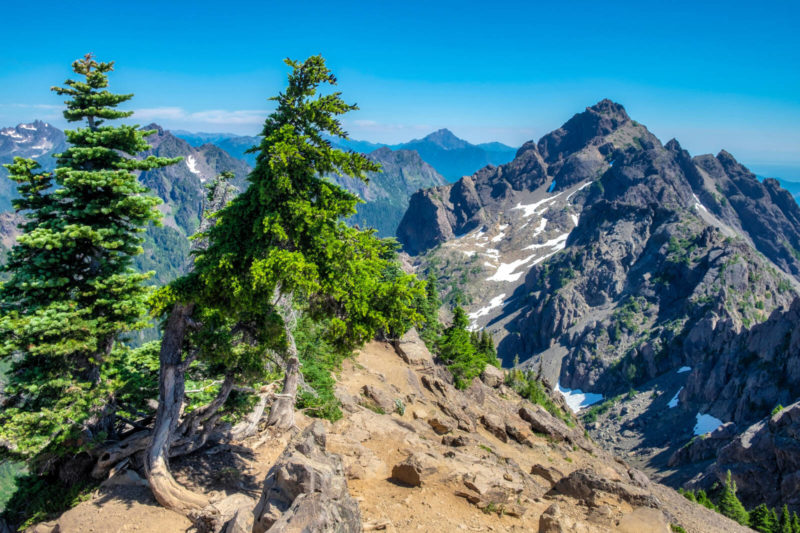
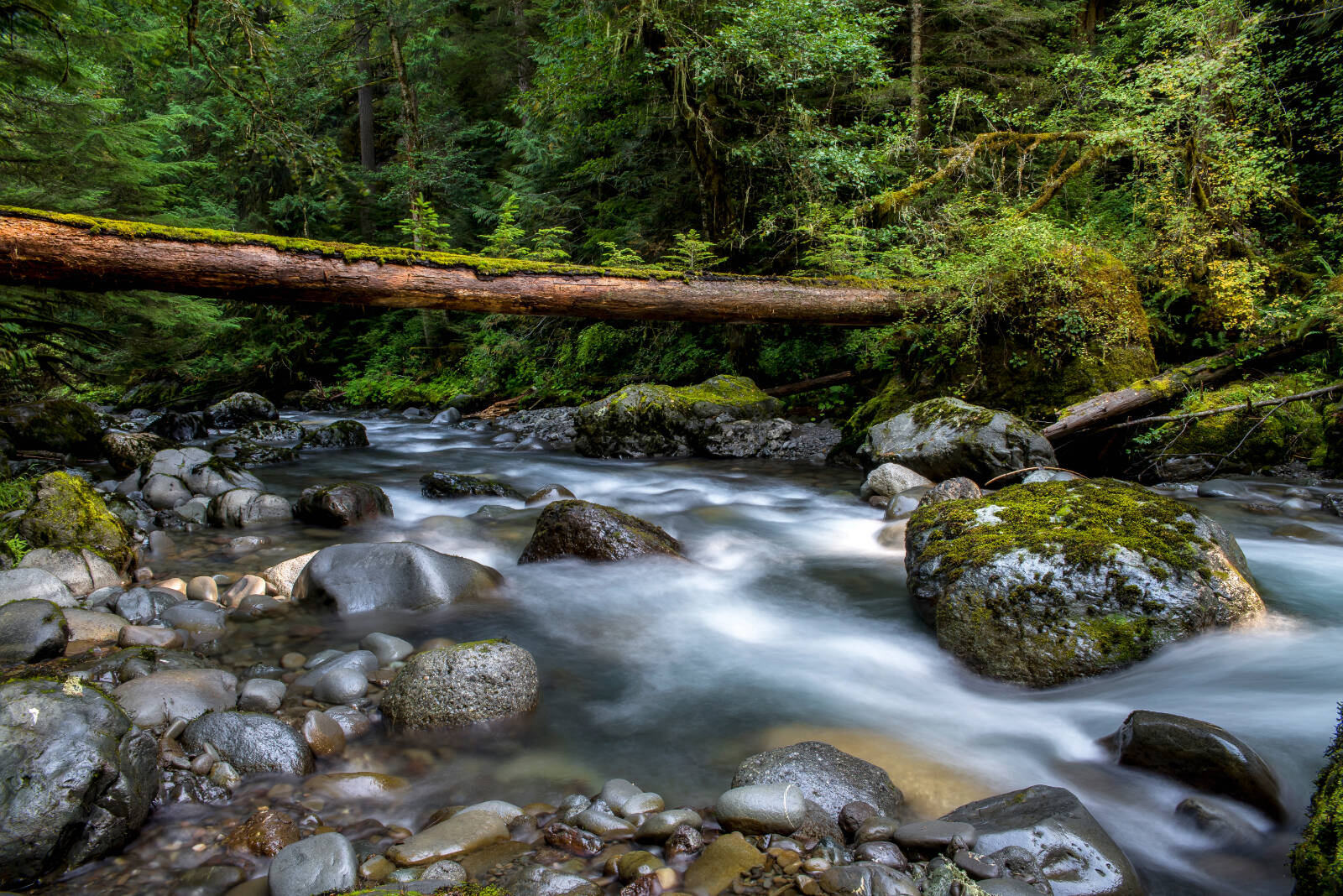
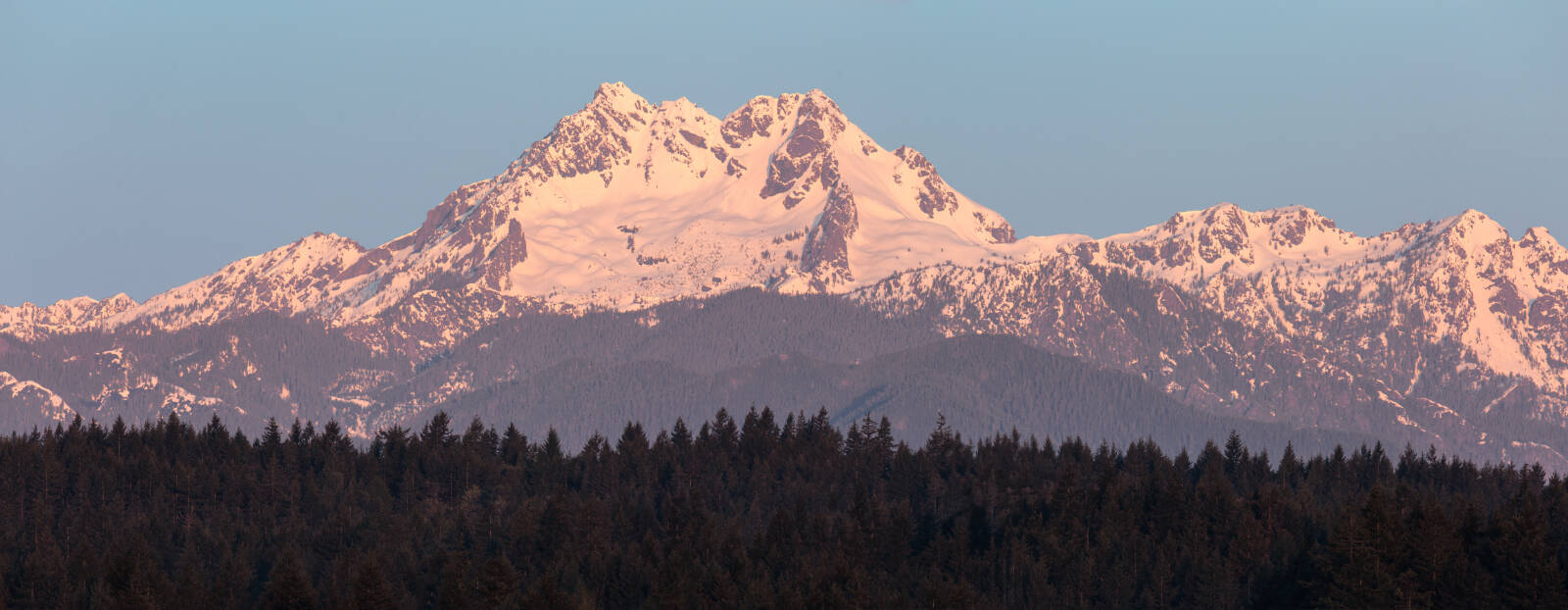
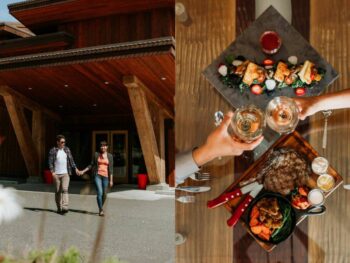
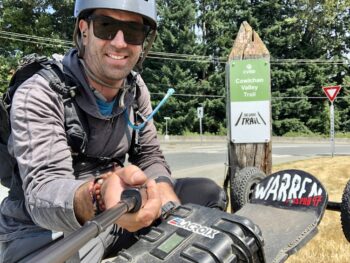
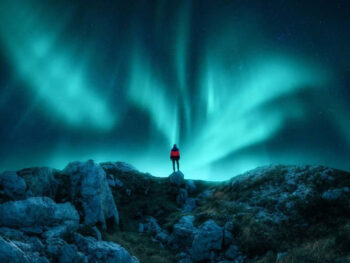
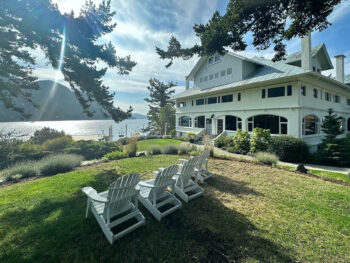
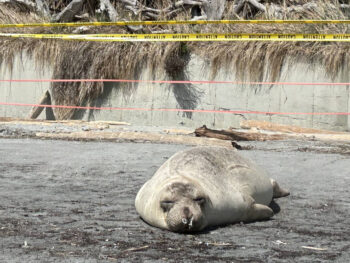
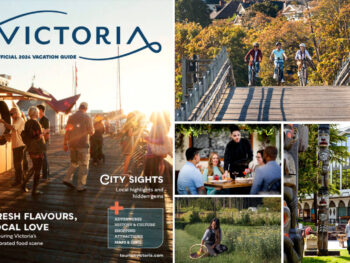

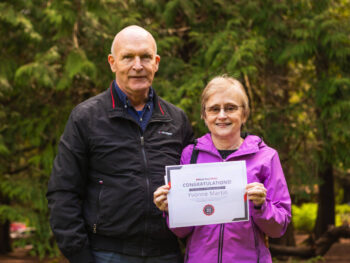
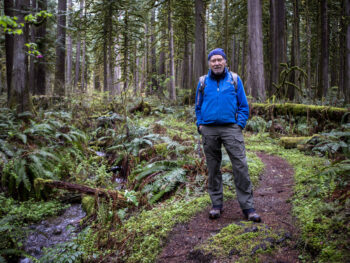
 A stylish yet rustic winter retreat just outside Granite Falls
A stylish yet rustic winter retreat just outside Granite Falls